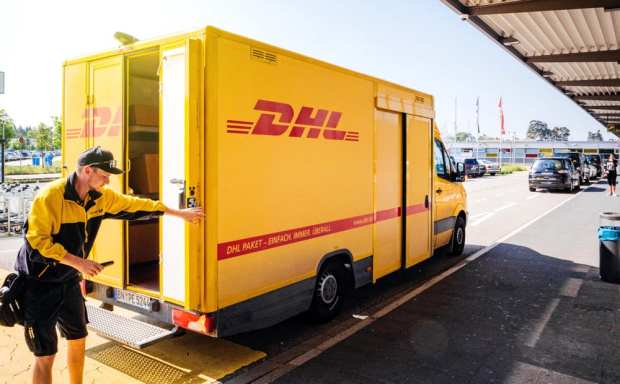DHL: What Happens When Robots Run The Warehouse

Amazon Prime is shrinking delivery windows, and consumers now expect items to arrive in a day – or less – making supply chain management and the last mile more critical than ever. Adrian Kumar, global head of Operations Science & Analytics at DHL Supply Chain, tells Karen Webster that the key to optimizing fulfillment comes down to strengthening its weakest link using ergonomic design, artificial intelligence (AI) and letting robots run the warehouse.
Logistics can make or break any business.
In the age of Amazon Prime, where two-day delivery is no longer enough and the promise of one-day delivery has gained ground, the old cliché holds true:
You’re only as strong as your weakest link.
And in an interview with Karen Webster, Adrian Kumar, global head of operations, science and analytics at DHL Supply Chain, said that better inventory management can be aided by ergonomic design and automated processes through the use of artificial intelligence (AI) and robotics.
The question of supply chain management – of tracking the continuum from online ordering to picking to packing to navigating the last mile – hangs over seemingly every business conversation these days.
Amid the headlines over the Coronavirus, and with the ongoing shifts in trade disputes between the U.S. and any number of partners (China and India among them), Kumar noted that DHL runs supply chains on behalf of its customers who are primarily based in the States, and thus are tied to domestic consumption.
But regardless of geographic focus, the shifts and challenges facing supply chains are deep-rooted.
As Kumar said, now more than ever, “supply chains are now on the front line” of keeping end customers satisfied.
The Weakest Link(s)
Asked by Webster where the weakest may lie in the synchronization of activities across operations, particularly for smaller firms or those in startup mode, Kumar replied:
“The accuracy of inventory needs to be really strong. If you’re taking orders on the website for items that you don’t have the inventory for, because the inventory is not accurate or it’s in the wrong location, there will be a lot of work on the [packing] floor that can’t get through the next phase of the process … everything gets held up.”
The McDonald’s Example
To get a sense of the guiding principles of the modern supply chain and increased efficiency, consider McDonald’s, where Kumar served as an operations manager earlier in his career.
“I see a lot of correlation,” he told Webster. “They run a very tight ship … everything’s thought out, as far as placement of items, in terms of when they are making the hamburger, to how far everything is from the employees – everything from the ketchup and mustard guns, the condiments, even the grill itself. It’s all ergonomically designed.”
That principle of ergonomic design has carried over to the design of DHL’s operations, said Kumar. Coordination is key across all parts of the picking and packing process, and the ripple effect carries over into the supply chain at large.
The Movement Toward Automation
The ever-accelerating move into eCommerce, and specifically into direct-to-consumer (DTC) markets, may have caught many firms unprepared for logistics challenges. As Kumar told Webster, “they didn’t quite understand the fulfillment business.” Traditional consumer goods firms or retailers have been able to place orders months in advance, knowing the inventory will eventually arrive. Taking orders for items that are “not completely pickable yet” will not have a negative impact on a company’s business if a product is needed in a few days or even a week, for example.
That stands in stark contrast to other verticals with strict cutoff times in place, such as medical supplies, where Kumar said it is critical for firms to know where inventory is before accepting orders or telling customers that an order can indeed be filled.
That visibility can be aided by predictive analytics, through robotic solutions that work as companions to pickers and back-office AI.
There’s no one-size-fits-all solution to optimizing logistics, said Kumar, who stated that “every customer is going to be somewhat different.”
But there are levers and variables that can be considered when streamlining processes.
“One of those levers is your shipping modes,” he explained. “If you go with fewer warehouses but you are okay with paying for faster shipping modes, you can get away with having, for example, one warehouse in Memphis right next to the FedEx hub, and being able to deliver everything the next day.” But a fashion retailer or an online marketplace that embraces a search-payments-logistics framework – which traffics in hundreds or even thousands of SKUs – will likely consider having several fast-moving shared warehouses across a given geographic region.
In one example of other tech-driven efforts, DHL has partnered with Locus Robotics to develop aisle picking robots. Kumar said that by the end of the year, there will have been 11 installs with Locus, spanning more than 1,000 robots within existing warehouse locations and infrastructure (thus cutting the need for costly upgrades).
“It’s very challenging to pick [and fulfill] orders if you don’t have some type of optimization software or robotics,” he said. “If you just send an order to the floor without any kind of massaging or manipulation to that order, you’re inevitably going walk a mile to pick that order, and all the other orders, too … and it’s not sustainable.”
